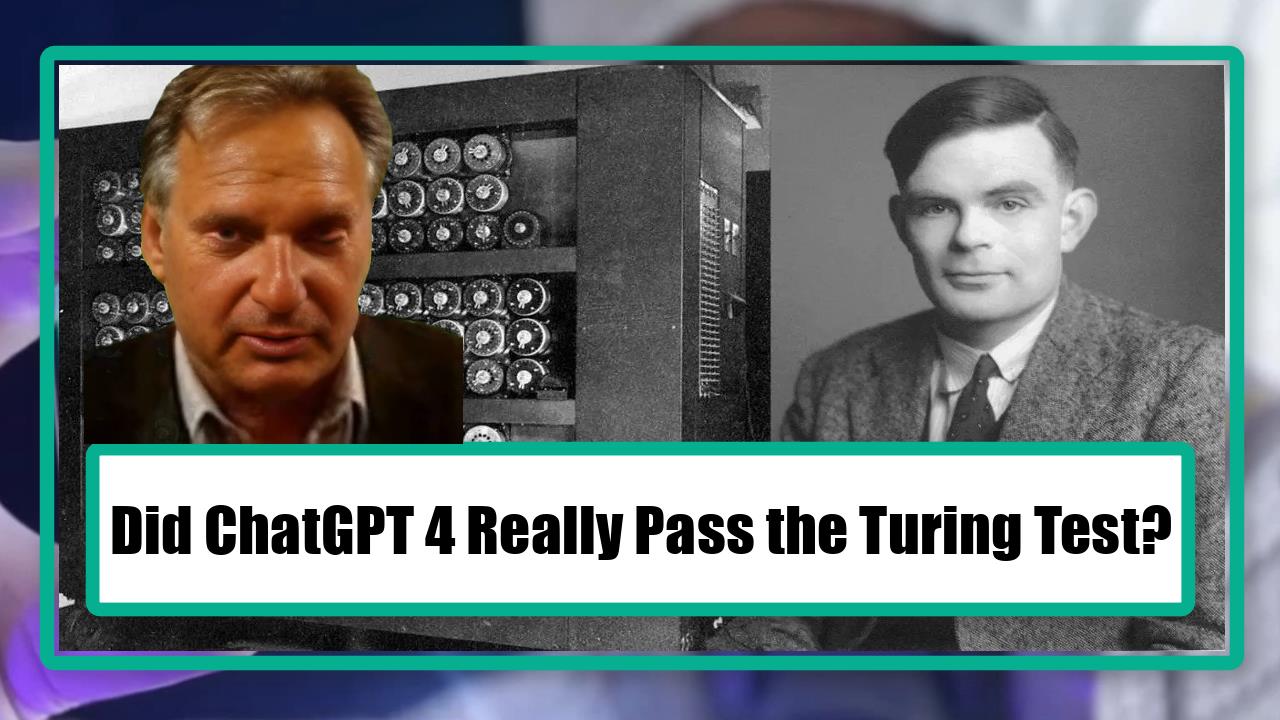Video:
Take our online poll:
AI Analysis:
The Turing Test, proposed by the British mathematician and computer scientist Alan Turing in his 1950 paper "Computing Machinery and Intelligence," is a test of a machine's ability to exhibit intelligent behavior equivalent to, or indistinguishable from, that of a human. Turing's idea was to evaluate a machine's intelligence based on its ability to produce human-like responses in a text-based conversation.
How the Turing Test Works:
Participants: There are three participants in the test – a human judge, a human respondent, and the machine being tested.
Setup: The judge is separated from the other two participants and interacts with them through a text interface, without knowing which is the human and which is the machine.
Objective: The judge engages in natural language conversations with both the human and the machine, asking questions and assessing responses.
Outcome: If the judge is unable to reliably distinguish the machine from the human based on their responses, the machine is considered to have passed the Turing Test.
Several machines and AI programs have claimed to have passed versions of the Turing Test over the years, but these claims often come with caveats and controversy regarding the strictness of the test conditions.
Notable Examples:
ELIZA (1966): An early natural language processing computer program created by Joseph Weizenbaum that simulated a Rogerian psychotherapist. ELIZA's simplicity made it clear that it was not genuinely intelligent, but it did show how machines could mimic certain human-like interactions.
PARRY (1972): A program created by psychiatrist Kenneth Colby to simulate a patient with paranoid schizophrenia. PARRY's responses were more sophisticated than ELIZA's but still not convincingly human-like.
Eugene Goostman (2014): A chatbot that simulated a 13-year-old Ukrainian boy. During a Turing Test competition organized by the University of Reading, Eugene Goostman reportedly convinced 33% of human judges that it was human, a milestone that some claimed marked the first time a machine passed the Turing Test. However, this claim has been debated, with critics arguing that the conditions and criteria of the test were not sufficiently rigorous.
ChatGPT and other advanced AI models: While models like OpenAI's GPT-3 and GPT-4 have shown impressive capabilities in generating human-like text and engaging in conversations, their ability to pass a strict Turing Test depends on the specific criteria and context of the test.
Conclusion:
While there have been instances where machines have fooled human judges in limited or specific contexts, no machine has yet universally passed a rigorous and widely accepted version of the Turing Test. Advances in AI continue to push the boundaries of what machines can do, and the debate over machine intelligence and the Turing Test remains active and evolving.
Chart:

References:


Comments